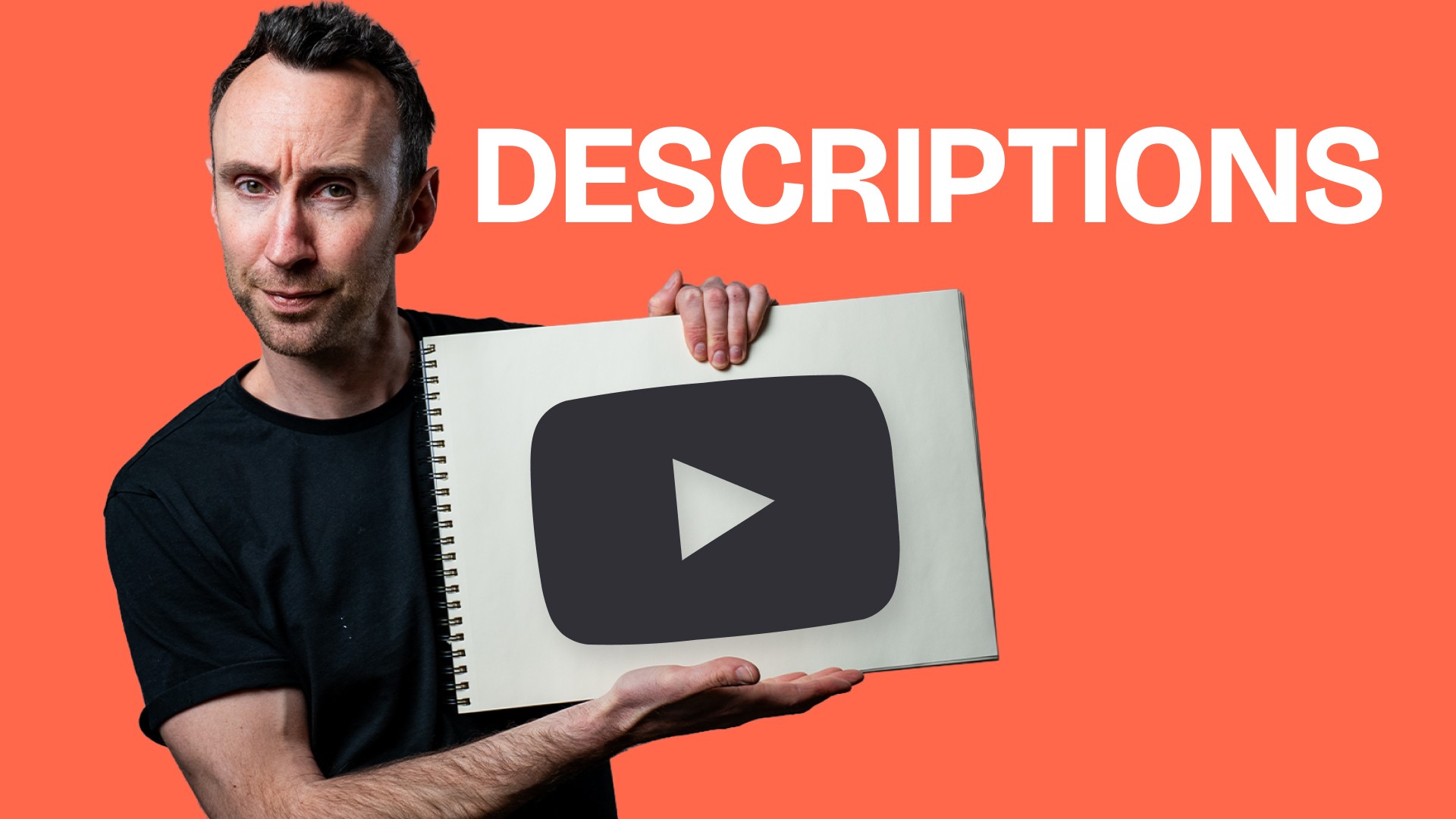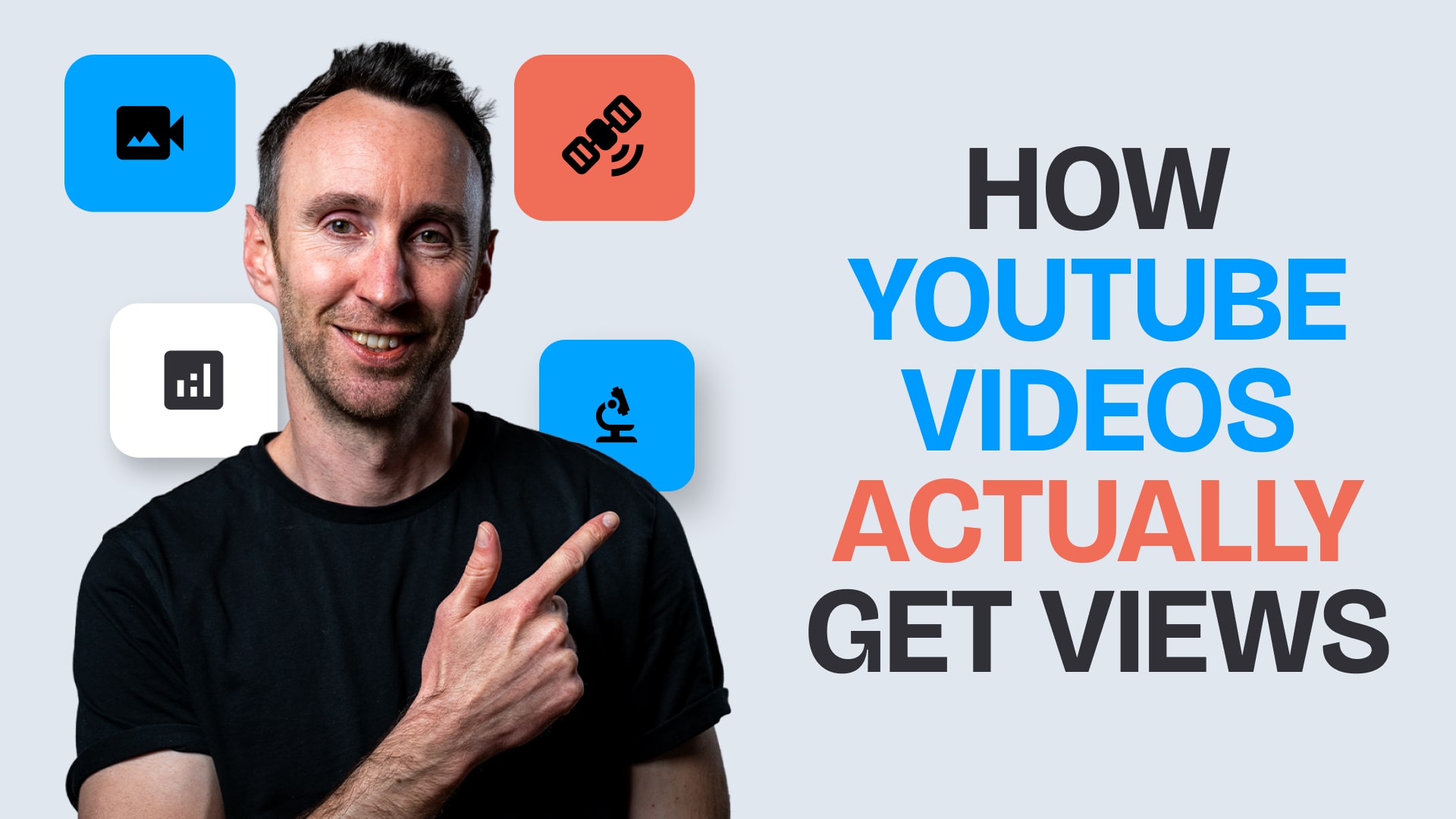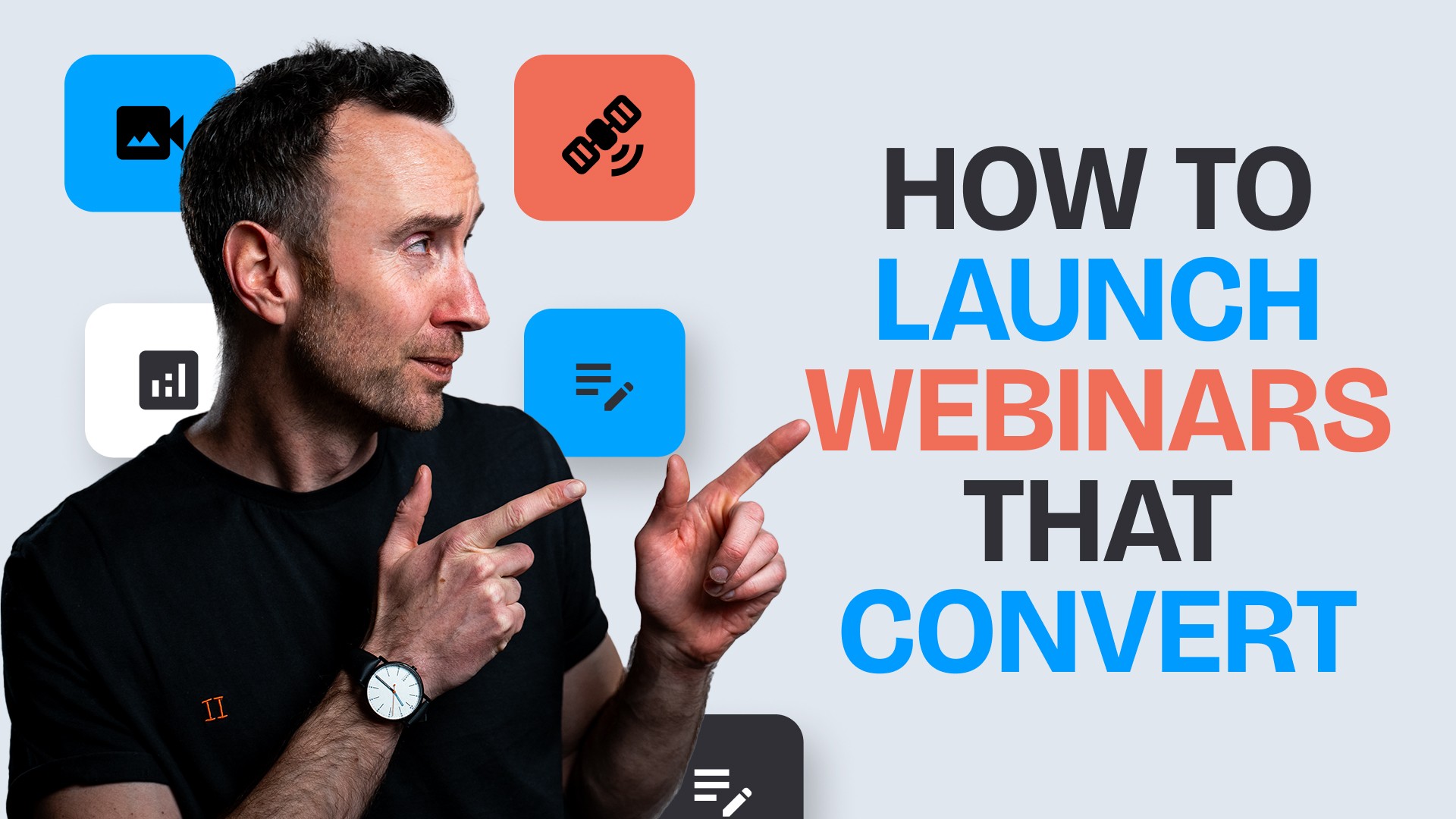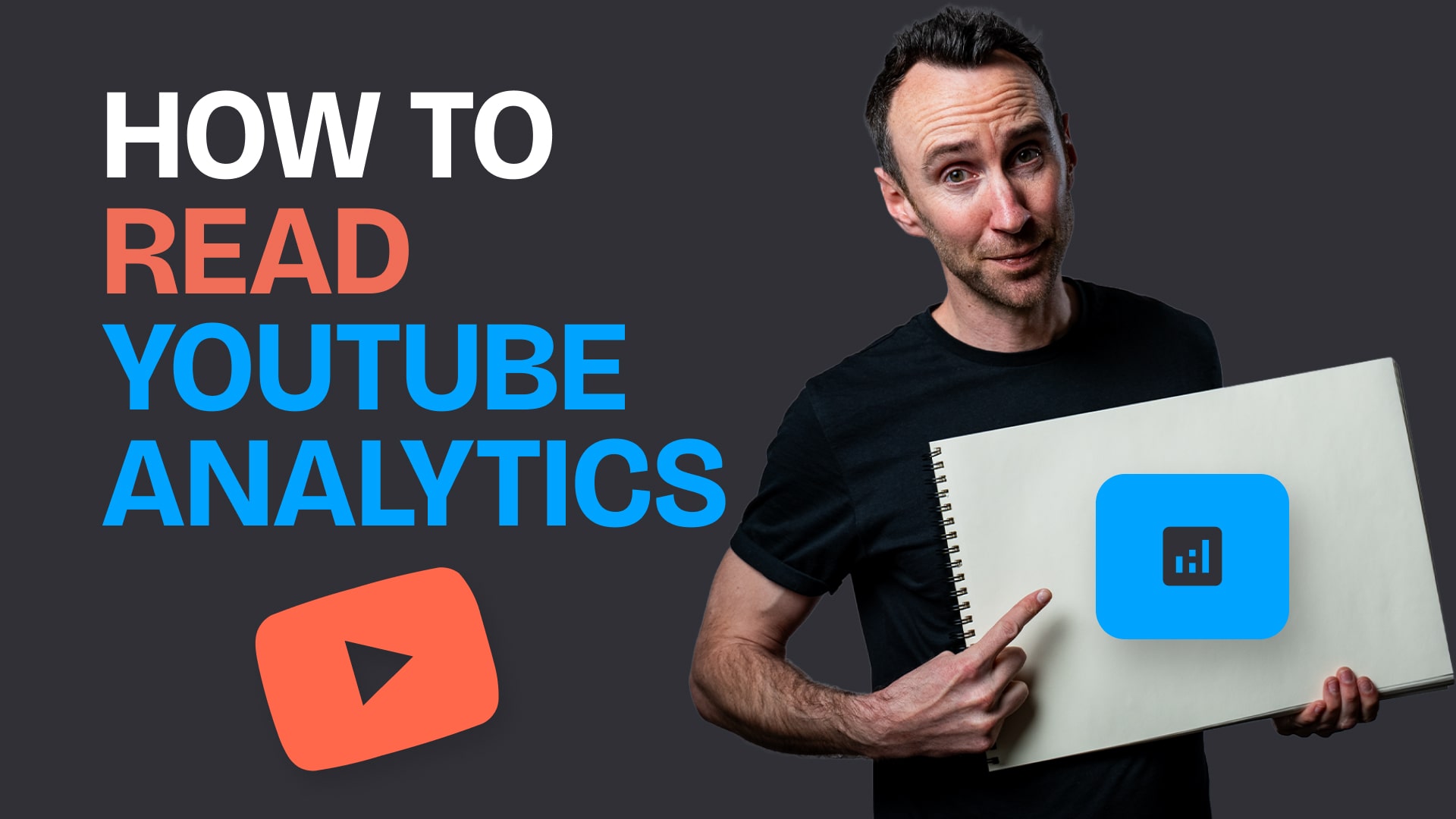
BLOG OVERVIEW
How to Write a YouTube Description That Actually Drives Revenue (Yes, Really)
In
YouTube
by
Edward Wood
May 25, 2025
Let’s talk about one of the most underappreciated tools in your YouTube arsenal: the description box.
It’s not glamorous. It doesn’t get debated endlessly on LinkedIn. It doesn’t get critiqued on r/roastmychannel. But if you’re building a YouTube channel for your business—or any kind of performance-driven brand—it’s one of the most quietly powerful levers you’ve got.
And yet, most companies treat it like an afterthought. Two lines of generic fluff, a broken link or two, maybe some hashtags for good measure… and then onto the next upload.
But here’s the thing: a thoughtfully written YouTube description can do three incredibly valuable things for your business:
Drive real, measurable conversions.
Improve your discoverability via search and suggestion.
Build longer YouTube session times (which the algorithm loves).
In other words—it can drive revenue, traffic, and reach, all from the same 5,000-character box.
Let’s break down how.
1. Use Your Description to Drive Conversions (and Actually Measure Them)
Let’s start with the good stuff: revenue.
At Humble&Brag, we’ve helped clients build YouTube channels that don’t just look great or feel “on brand,” but actually generate a measurable return. In some cases, that means millions in annual revenue. And a well-structured description is a key part of that funnel.
Here’s how it works.
Before you even create the video, you should already know what kind of action you want your viewer to take. In most cases, it won’t be “buy now” (unless your product is very low-friction or impulse-friendly). Instead, it’ll be something softer—what we call a lead magnet.
Think: free trial, downloadable guide, product quiz, webinar signup, or a mini-course. Something useful, relevant, and zero-pressure. Then, you mention that thing inside the video (briefly and naturally), and you place a prominent link to it in the first two lines of your description.
Why the first two lines? Because that’s what appears above the fold—especially on mobile, where most YouTube traffic happens. If you bury your CTA under a wall of text, you’ve already lost.
The result? Clicks. Trackable ones. Ones that end up in your CRM, attached to real users, with real revenue potential. Once you’ve got their email, you can nurture them via other channels—and start tying revenue back to content. That’s the dream.
Bonus: we typically see 3–5% of video viewers click through on strong CTAs in the description, and freebie funnels can convert anywhere from 20–50% of those visitors to leads.
So yeah—it’s not just a box. It’s the start of your funnel.
2. Build a Content Ecosystem, Not Just a One-Off CTA
Of course, most businesses don’t live and die by one link. So while you should always prioritize one primary CTA, your description can (and should) serve as a gateway to your broader content ecosystem.
What do we mean by that?
Further down in your description (post-CTA), you can include links to:
Your blog or resource centre (especially if this video complements a post)
Other related YouTube videos or playlists (to increase session duration)
Social profiles (though don’t push these too hard—they rarely convert)
Product pages or pricing overviews
Your newsletter or community (if you’re building owned audience channels)
It’s also a great place to add a short “about us” blurb, especially if you’re targeting viewers who are new to your channel. Something like:
Humble&Brag helps startups and scaleups grow through YouTube. We build full-stack content engines that actually drive results. Learn more at humbleandbrag.com.
When you do this consistently, across a growing video library, it adds up. Viewers go from one video to another, or jump from video to website. Over time, your description links become a dense web of qualified traffic routes—feeding your ecosystem 24/7.
And the best part? Once you’ve written a strong base template, you can templatize it inside YouTube Studio and tweak as needed per video. High leverage, low effort.
3. Make Your Videos Easier to Discover with YouTube SEO
So, we’ve talked about conversions and ecosystem-building. Now let’s talk traffic. Specifically: how to write your description in a way that helps people find your video in the first place.
Because while YouTube’s algorithm has evolved beyond raw SEO, search still matters. A lot.
Here’s how to approach it:
a. Use Relevant Keywords (Without Sounding Like a Robot)
If your video targets a specific search term (and ideally, it should), include that term in the first few lines of your description—and sprinkle related phrases throughout the body.
Example:
In this video, we’ll show you how to write a high-converting YouTube description for your business channel in 2025. Whether you’re looking to boost SEO, improve click-throughs, or drive more qualified leads from YouTube, we’ll cover the frameworks that actually work.
Tools like Ahrefs, SEMrush, and even YouTube's autocomplete can help you identify keyword opportunities. But keep it human. This isn’t 2011. No one wants to read a string of keyword salad.
b. Add Chapters with Smart, Searchable Labels
Chapters (a.k.a. video timestamps) do double duty. They help viewers navigate your content, and they give YouTube more metadata to understand your content.
But here’s the kicker: Google often shows video chapters directly in search results. That means if you name them well, your video can occupy more real estate on the results page—and drive more traffic as a result.
Bad:00:00 – Intro
Better:00:00 – Why Most YouTube Descriptions Underperform
Even better:00:00 – How to Write a YouTube Description That Converts in 2025
Again, think like a searcher.
c. (Advanced) Reference Other Videos for Suggested Placement
Want to increase your chances of showing up as a “suggested video” next to a giant in your niche? Try referencing their title or even their link in your description.
For example, if you’re posting a video on YouTube SEO and you want to be shown next to Neil Patel or Ahrefs, a short line like:
Inspired by this fantastic guide from Ahrefs: [link]
…might just give the algorithm the nudge it needs. No guarantees, but again—it’s a game of edges.
4. Don’t Forget About Engagement (and Personality)
Now that you’ve handled conversions, discoverability, and cross-promotion… let’s inject some personality.
The description is also your opportunity to start a conversation.
Here are a few simple tactics:
Ask a specific question that ties into the video topic and invite responses in the comments.
Tease an “easter egg” or surprise if viewers stay until the end—and drop a password in the description to track who did.
Link to a Miro board, Notion doc, or other resource that deepens the value.
Basically, make the description feel alive. Not just a sales pitch. Viewers can feel the difference—and they respond accordingly.
5. The TL;DR Structure (Use This Template)
If you want a simple plug-and-play format to work from, try this:
Line 1: A clear one-line summary of the video topic.
Line 2: A strong CTA with a link to your lead magnet or next step.
Paragraph 1: A few lines expanding on the value of the video (with a keyword or two included).
Paragraph 2+: Optional. Add relevant links to related videos, playlists, blog posts, social handles, or product pages.
Chapters: Use timecodes to break the video into searchable sections.
Outro: Quick bio or brand pitch + second-tier CTA (e.g., “Join our newsletter” or “Follow us on LinkedIn”).
Example:
Want to drive more revenue from your YouTube channel? This video shows you how to write YouTube descriptions that convert.
🎁 Free Lead Magnet Template: [link]
Learn the exact structure we use to turn views into leads—and leads into sales. We’ve used this approach to generate 7-figure revenue for clients across industries.
Related Videos:
How to Build a YouTube Funnel from Scratch: [link]
Our Top 3 Video Scripts for B2B SaaS: [link]
Chapters:
00:00 – Why Descriptions Matter
01:42 – Conversion Tactics
06:10 – SEO for Discoverability
10:05 – Suggested Video Strategy
13:50 – Engagement HacksHumble&Brag helps brands grow through YouTube. Want help building your strategy? Let’s talk → humbleandbrag.com
Final Thoughts: It’s Just a Box—Until It’s Not
The YouTube description isn’t the flashiest part of your content stack. But it quietly supports everything that matters: visibility, credibility, conversion.
Get it wrong, and you’ll never know what you’re missing.
Get it right—and it becomes one of the most efficient, high-leverage pieces of your marketing engine.
So next time you’re about to upload a video… don’t treat the description like a formality. Treat it like the first step of your funnel.
And if you want to see how this all works in practice, check out our description below, steal the format, or come join our community of channel-builders at Humbleweed. It’s free, and we talk about this stuff all the time.
See you there.




